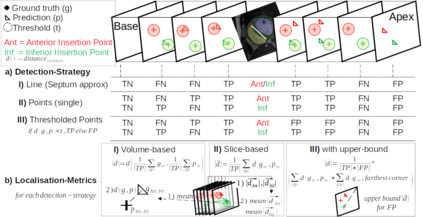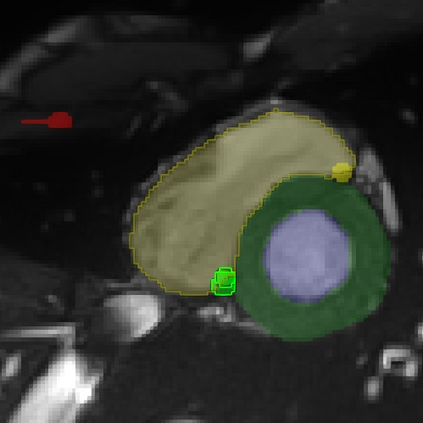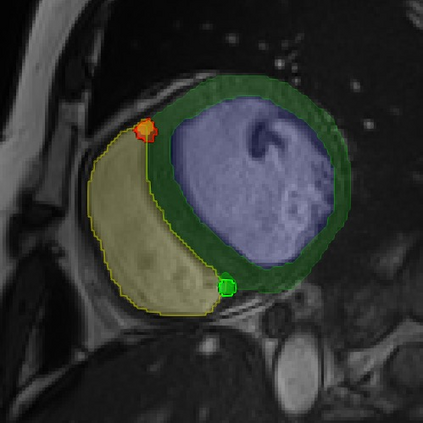Cardiac Magnetic Resonance (CMR) images are widely used for cardiac diagnosis and ventricular assessment. Extracting specific landmarks like the right ventricular insertion points is of importance for spatial alignment and 3D modeling. The automatic detection of such landmarks has been tackled by multiple groups using Deep Learning, but relatively little attention has been paid to the failure cases of evaluation metrics in this field. In this work, we extended the public ACDC dataset with additional labels of the right ventricular insertion points and compare different variants of a heatmap-based landmark detection pipeline. In this comparison, we demonstrate very likely pitfalls of apparently simple detection and localisation metrics which highlights the importance of a clear detection strategy and the definition of an upper limit for localisation-based metrics. Our preliminary results indicate that a combination of different metrics is necessary, as they yield different winners for method comparison. Additionally, they highlight the need of a comprehensive metric description and evaluation standardisation, especially for the error cases where no metrics could be computed or where no lower/upper boundary of a metric exists. Code and labels: https://github.com/Cardio-AI/rvip_landmark_detection
翻译:心血管磁共振成像(CMR)图像被广泛用于心脏诊断和心血管评估。提取右心血管插入点等特定标志对于空间校准和3D建模非常重要。多个群体利用深层学习解决了自动探测这些标志的问题,但相对较少注意该领域评价指标的失败案例。在这项工作中,我们扩大了ACDC公共数据集,增加了右心血管插入点的标签,并比较了基于热映像的标志性探测管道的不同变量。在比较中,我们显示了明显简单的探测和定位指标的极有可能陷阱,这些标志性指标凸显了清晰探测战略和基于本地化指标上限定义的重要性。我们的初步结果显示,不同指标的组合是必要的,因为它们为方法比较带来了不同的赢家。此外,它们强调需要进行全面的计量描述和评价标准化,特别是对于无法计算指标或指标没有较低/最高边界的错误案例。代码和标签: https://girub/Carprction.commark: https://AItumber_carprobrb_tambrimasmartys)。








